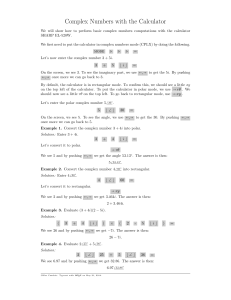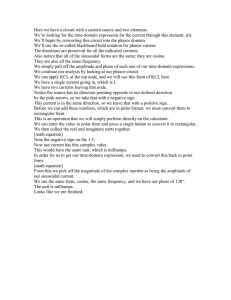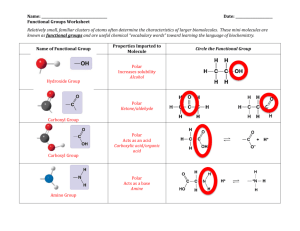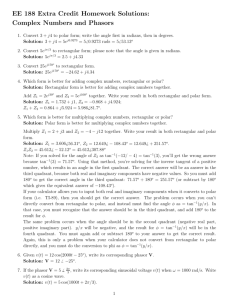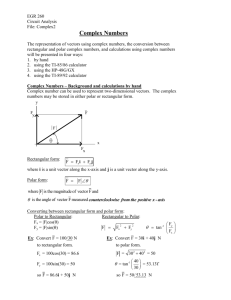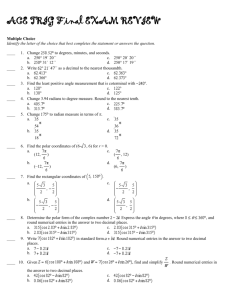Phasor Analysis on the TI-89 - csserver
advertisement
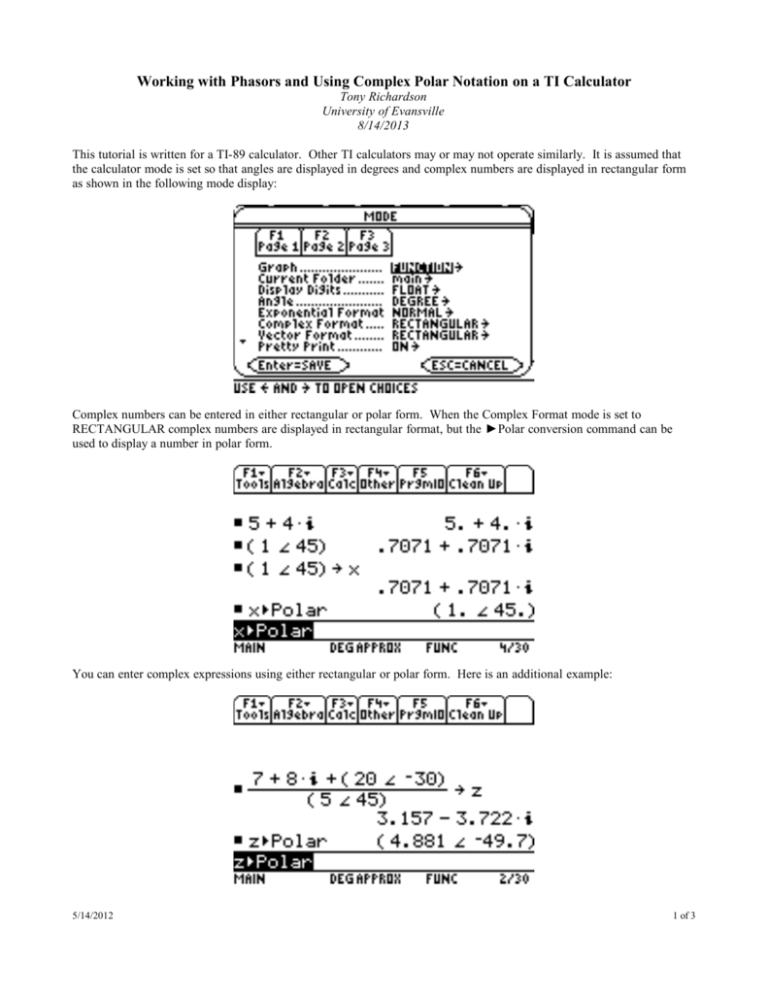
Working with Phasors and Using Complex Polar Notation on a TI Calculator Tony Richardson University of Evansville 8/14/2013 This tutorial is written for a TI-89 calculator. Other TI calculators may or may not operate similarly. It is assumed that the calculator mode is set so that angles are displayed in degrees and complex numbers are displayed in rectangular form as shown in the following mode display: Complex numbers can be entered in either rectangular or polar form. When the Complex Format mode is set to RECTANGULAR complex numbers are displayed in rectangular format, but the ►Polar conversion command can be used to display a number in polar form. You can enter complex expressions using either rectangular or polar form. Here is an additional example: 5/14/2012 1 of 3 The results shown indicate that z is equal to 3.1566 – 3.72228i or (4.8805 ∠ −49.701°). Note: Due to a bug in my TI-89, I prefer to use rectangular mode and then use the ►Polar converter when I want to see a result in polar form. For some reason, when in polar mode, the ►Rect converter does not work on vectors (it works fine on scalars and matrices). When in rectangular more the ►Polar converter works on scalars, vectors and matrices. You can enter a column vector of complex numbers using the following syntax: [[(10∠45)] [(20∠-20)] [(100∠0)]] → z The results (in rectangular and polar form) of entering this vector are shown in the screenshots below: Here's a final example that illustrates how tosolve a sinusoidal steady-state circuit problem. Suppose we want to find the branch phasor currents in the phasor domain circuit shown in Figure 1. We will use mesh analysis to solve this problem. We can write the following set of mesh equations by inspection: VA −V B 0 = j12 I A− I C 80 I A− I B = 80 I B− I A20 I B− I C = − j20 I C 20 I C − I B j12 I C − I A Instead of simplifying these equations by hand, let's go directly to the calculator. We can define the voltage array as: [[(100∠-90)] [-500] [0]] → V The elements of Z are formed directly from the mesh equations above (let the calculator do the work of combining the terms for you): [[12i+80, -80, -12i] [-80, 80+20, -20] [-12i, -20, -20i+20+12i]] → Z 5/14/2012 2 of 3 IC -j20 Ω j12 Ω VA = 100 ∠−90° IA 20 Ω 80 Ω IB VB = 500 ∠ 0° Figure 1: Example Frequency Domain Circuit Since V = Z I, we can solve for the branch currents I using the simult function as shown below: The currents are therefore equal to IA = (22.0 ∠−129.5°), IB = (24.0 ∠−129.3°), and IC = (25.5 ∠−78.69°). Note: Although the current vector I could be computed using I = Z-1 * V, it is more accurate to use the simult function as shown. 5/14/2012 3 of 3
